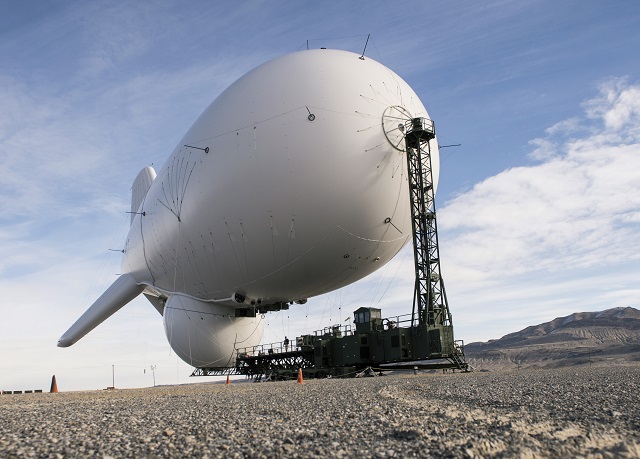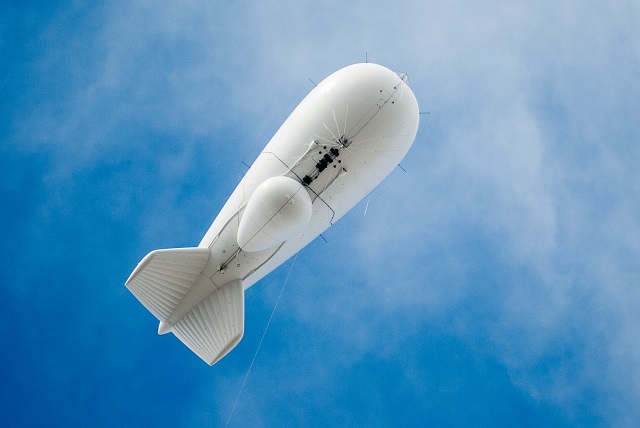It was a scene that captivated America. On 28 October, one of two US Army aerostats broke free of its mooring at the Aberdeen Proving Ground in Maryland and proceeded on a wild journey north through Pennsylvania, dragging a 6,700ft (2km) tether over powerlines as it went.
Two Lockheed Martin F-16s from New Jersey scrambled to monitor the uncontrolled balloon and even shoot it down if necessary. The Joint Land Attack Cruise Missile Defence System (JLENS), built by Raytheon, eventually came down on its own after 3h of excitement.
The tethered radar project, which began in 2005, promised to be a low-cost way of detecting and tracking cruise missiles as part of an integrated air defence network and it had just begun a three-year operational trial to assess its suitability for guarding Washington DC.
There were already questions about the effectiveness of the aerostat since it failed to detect a Florida mailman who landed a gyrocopter on the front lawn of the Capitol Building last April without being detected, but the "runaway blimp" incident appears to have been the final straw for US lawmakers.

JLENs stays aloft for 30 days at a time and was intended to support North American Aerospace Defense Command's (NORAD) air defense mission
US Air Force
The Pentagon wanted to refloat JLENS after tracing the cause of the October incident to a faulty air pressure sensor that allowed the aerostat’s tail fins to partially deflate in high winds. But Congress cut funding for JLENS in the current fiscal 2016 defence budget and in March, the Senate Appropriations Committee turned down the DOD's request to realign funding to fix the aerostat and resume trials.
This week, Congress moved a step closer to killing the programme entirely, with the House Armed Services panel adopting legislation that would limit spending on JLENS to $2.2 million as opposed to the $45 million listed in the Army's fiscal year 2017 budget submission.
“This isn’t the first time we’ve tried to let the air out of this balloon,” says Congresswoman Jackie Speier, who proposed the amendment to the fiscal 2017 defence policy bill. “Let’s hope this ‘zombie programme’ stays dead this time.”
If passed by the full Congress and signed into law, the will be the final nail in the coffin for the long-running JLENS effort. The Army originally wanted to field 16 JLENS units, but stopped at two for testing at the Aberdeen Proving Ground.
Raytheon says the aerostat, which provides 360° of radar coverage from 10,000ft, costs a fraction of what it does to provide 24h coverage with radar-carrying fixed-wing aircraft such as the Boeing E-3 AWACS or Northrop Grumman E-8 JSTARS and E-2 Hawkeye. It has a detection range of approximately 547km.

JLENS feeds targeting data to the Patriot and Standard Missile 6 air defense systems and surface-launched AIM-120 AMRAAMs. One JLENS was meant to carry a VHF-band surveillance radar while the other floated an X-band fire-control radar
Raytheon
Source: FlightGlobal.com























